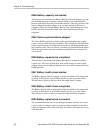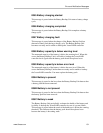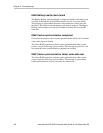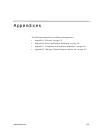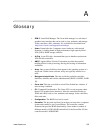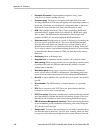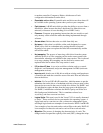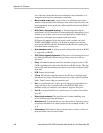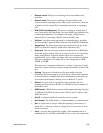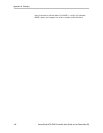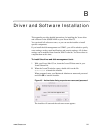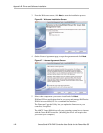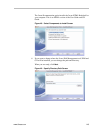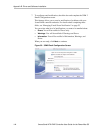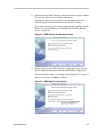
Appendix A. Glossary
138 3ware Serial ATA RAID Controller User Guide for the Power Mac G5
size of the unit, change the unit from redundant to non-redundant, or to
change the unit from non-redundant to redundant
.
• Mirrored disk array (unit). A pair of drives on which the same data is
written, so that each provides a backup for the other. If one drive fails, the
data is preserved on the paired drive. Mirrored disk units include RAID 1
and RAID 10.
•
NCQ (Native Command Queuing). A feature designed to improve
performance of SATA hard disks in some applications that require a lot of
random access of data, such as server-type applications. When NCQ is
enabled, the commands are reordered on the drive itself.
NCQ must be supported by the drive and is only available on 3ware
9550SX and 9590SE controllers. NCQ must be turned on in both the
drive and the RAID controller. By default, the RAID unit’s queue policy
is disabled when creating a unit.
•
Non-redundant units. A disk array (unit) without fault tolerance (RAID
0, single disk, or JBOD.).
•
OCE (Online Capacity Expansion). The process of increasing the size of
an existing RAID unit without having to create a new unit. See also
migration.
•
Parity. Information that the controller calculates using an exclusive OR
(XOR) algorithm and writes to the disk drives in RAID 5 units. This data
can be used with the remaining user data to recover the lost data if a disk
drive fails.
•
PCB. Printed circuit board.
•
P-Chip. PCI interface chip that connects the PCI bus to the high-speed
internal bus and routes all data between the two using a packet switched
fabric. There is one P-chip per controller card.
•
Port. A controller has one or many ports. Each port can be attached to a
single disk drive. On a controller such as the 9590SE-4ME, with a
multilane serial port connector, one connector supports four ports.
•
Port ID. A unique identifier for a specific port in a system. Also called a
drive ID.
•
Rebuild task schedule. The specification for when rebuilding, may
occur, including start time and duration.
•
Rebuild a unit. To generate data on a new drive after it is put into service
to replace a failed drive in a fault tolerant unit (for example, RAID 1, 10,
or 5).
•
Redundancy. Duplication of data on another drive or drives, so that it is
protected in the event of a drive failure.



